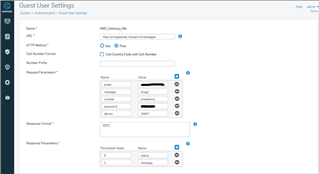Hi everyone
First of all, sorry for my bad English because English is not my native language.
In this post I will give you all some tips to allow guests to create their own user account using their phone number. Instead of using exist SMS Gateway provided by Sophos XG Firewall, I use SMS Gateway Me.
- Install SMS Gateway API app into you android phone
- Register an account to use the service
- Create a new SMS Gateway and set it up like picture below
- Check Enable Guest Users Registration at [System => Authentication => Guest User Settings]
- Set up hotspot to redirect website to http://sfos-ip:8090 to go to captive portal
- Create a drop rule below hotspot rule to redirect all unauthenticated user to captive portal
This thread was automatically locked due to age.




